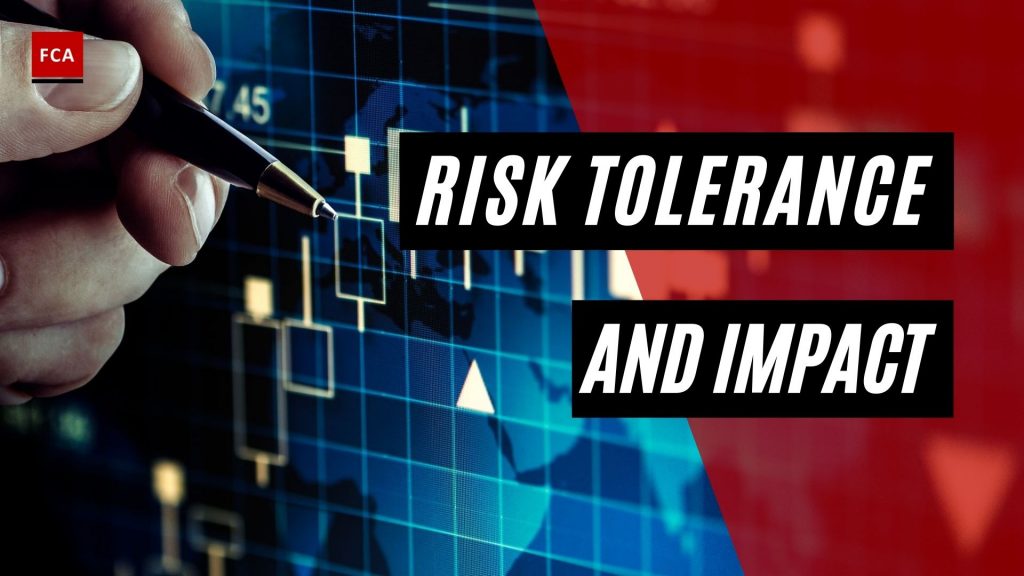The risk tolerance and impact are closely linked to risk appetite is tolerance for acceptable variation in performance. This describes the range of acceptable outcomes related to achieving a business objective within the risk appetite. It also provides an approach for measuring whether risks to achieving strategic and business objectives are acceptable or unacceptable.
The Risk Tolerance And Impact
Understanding the tolerance for variation in performance enables management to enhance value to the entity. For example, the right boundary of acceptable variation should generally not exceed the point where the risk profile intersects risk appetite. However, if the right boundary is below the risk appetite, management may be able to alter its targets while remaining within its overall risk appetite. The maximum point where the performance target could be set is where the right tolerance boundary intersects with risk appetite.
Unlike risk appetite, which is broad, tolerance is tactical and focused: it should be expressed in measurable units (preferably in the same units as the business objectives), be applied to all business objectives, and be implemented throughout the entity. In setting tolerance, the organization considers the relative importance of each business objective and strategy.
For example, if an objective is deemed essential in accomplishing the entity’s strategy, or if a strategy is critical to its purpose and vision, the organization may decide to set a lower tolerance range. Tolerance focuses on objectives and performance, not specific risks.
Operating within defined tolerance provides management with greater confidence that the entity remains within its risk appetite and provides a higher degree of comfort that the entity will achieve its business objectives.

Performance Measures and Established Tolerances
Measures of performance related to a business objective help in confirming that actual performance is within an established tolerance.
Performance measures can be either quantitative or qualitative. Tolerance also considers exceeding and trailing variation, sometimes referred to as positive or negative variation. Note that exceeding and trailing variation is not always set at equal distances from the target.
The amount of exceeding and trailing variation depends on several factors. An established organization, for example, with significant experience, might move exceeding and trailing variation closer to the target as it gains experience at managing to a lower level of variation. The entity’s risk appetite is another factor: an entity with a lower risk appetite may prefer to have less performance variation compared to an entity with a greater risk appetite.
It is common for organizations to assume that exceeding variation in performance is a benefit, and trailing variation in performance is a risk. Exceeding a target does usually indicates efficiency or good performance, not simply that an opportunity is being exploited. But trailing a target does not necessarily mean failure: it depends on the organization’s target and how variation is defined.
Organizations should also understand the relationship between cost and tolerance to deal with associated risks efficiently. Typically, the narrower the tolerance, the more resources are needed to operate at that level of performance.
The risks that might endanger the achievement of strategy and business objectives must be recognized and evaluated. In the framework of risk appetite, risks are prioritized by severity. The organization then picks risk responses and assesses the amount of risk it has assumed using a portfolio approach. The outcomes of this procedure are communicated to important risk stakeholders.
The Board of Directors is responsible for approving and reviewing risk appetite and tolerance statements for operational risk based on the organization’s nature, size, and complexity, current financial situation, and strategic direction of the bank. As part of their risk management and capital assessments, the risk appetite and tolerance statement should reflect past and future aspects.
Organizations can express risk appetite, tolerance, and effect in the shape of loss data thresholds, Risk Control Self-Assessment remedial action prompts, and Key Risk Indicators thresholds. Furthermore, when the business and control environments evolve, the board should examine the appropriateness of thresholds or limitations for specific operational risks and an overall operational risk appetite and tolerance.
What Is Risk Tolerance?
The amount of loss that an investor is willing to accept when making an investment decision is referred to as risk tolerance. Several factors influence how much risk an investor is willing to take. Knowing one’s risk tolerance level assists investors in planning their entire portfolio and influences how they invest. For example, if a person’s risk tolerance is low, investments will be made cautiously, with more low-risk investments and fewer high-risk investments.
Types Of Risk Tolerance
Investors are typically divided into three categories based on how much risk they are willing to take. The categories are determined by a variety of factors, only a few of which have been discussed above. The three categories are as follows:
- Moderate
When compared to aggressive risk investors, moderate risk investors are less risk-tolerant. They accept some risk and usually set a percentage of losses that they can withstand. They diversify their investments across risky and safe asset classes. When the market is doing well, they earn less than aggressive investors, but they do not suffer large losses when the market falls.
- Aggressive
Aggressive risk investors are well-versed in the market and are willing to take huge risks. Such investors are accustomed to large upward and downward movements in their portfolio. Aggressive investors are typically wealthy, experienced, and have a diverse portfolio.
They prefer asset classes with volatile price movements, such as stocks. Because of the amount of risk they take, they benefit from superior returns when the market is performing well but suffer massive losses when the market performs poorly. They do not, however, panic sell during market crises because they are used to daily fluctuations.
- Conservative
Conservative investors are the ones who take the least amount of risk in the market. They avoid risky investments entirely and instead opt for the options they believe are the safest. They value avoiding losses over making profits. They only invest in a few asset classes, such as FDs and PPFs, where their capital is safe.
Final Thoughts
Investing without considering risk tolerance can be disastrous. When the value of an investment falls, an investor must know how to react. Many investors flee the market, selling at a loss. At the same time, a market decline can be an excellent time to purchase. As a result, determining risk tolerance aids in making informed decisions rather than hasty, erroneous ones.








